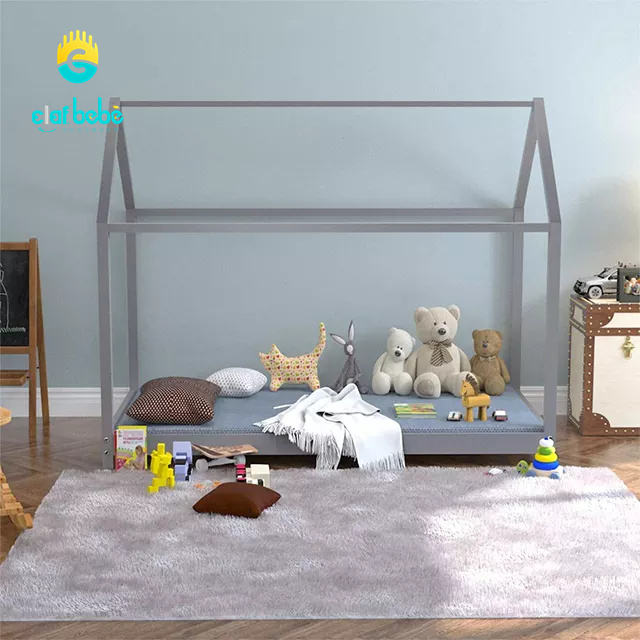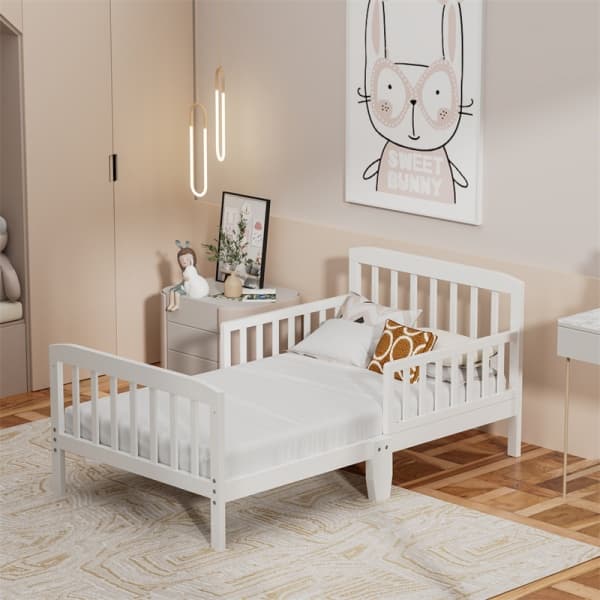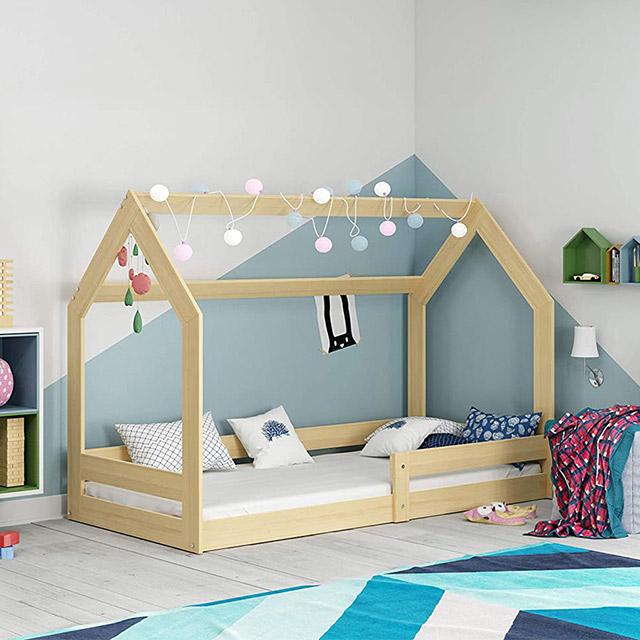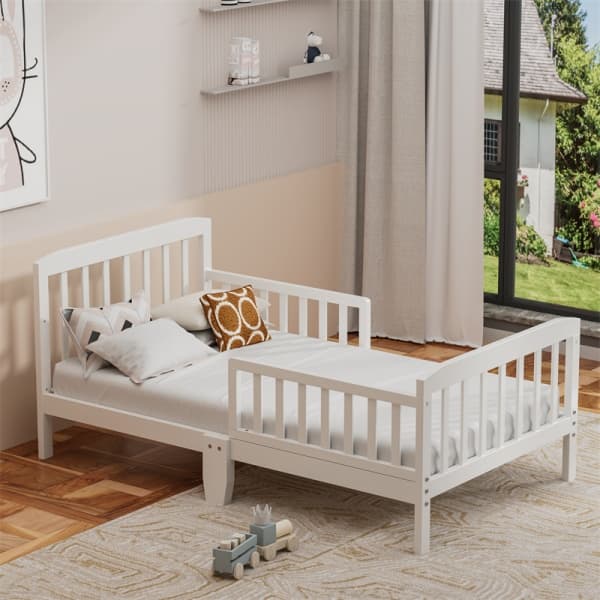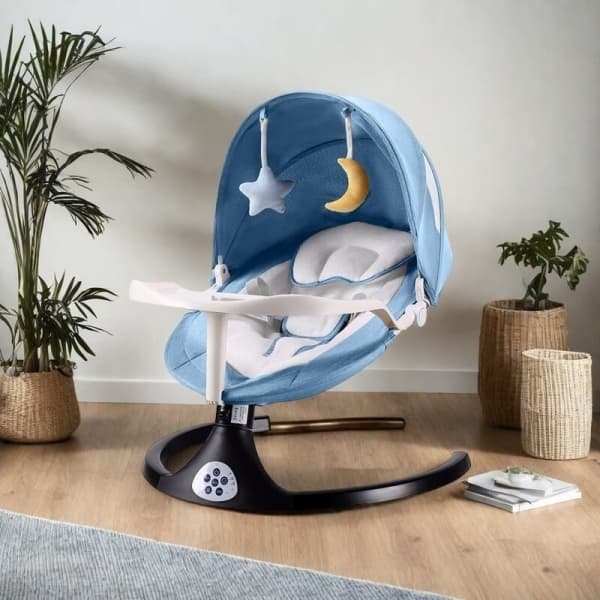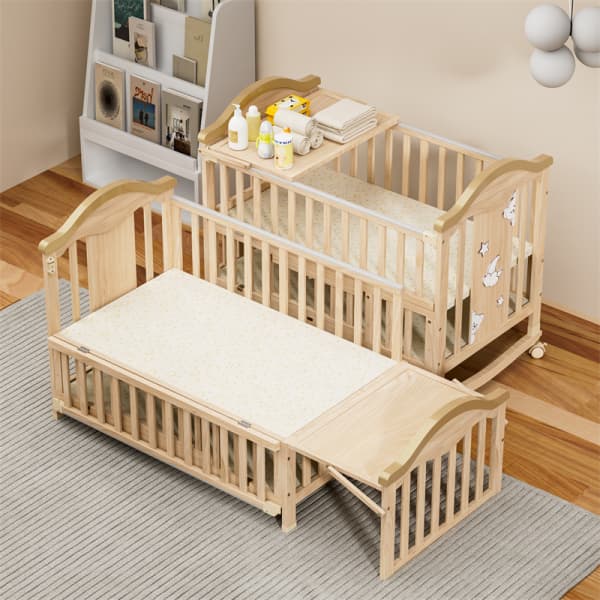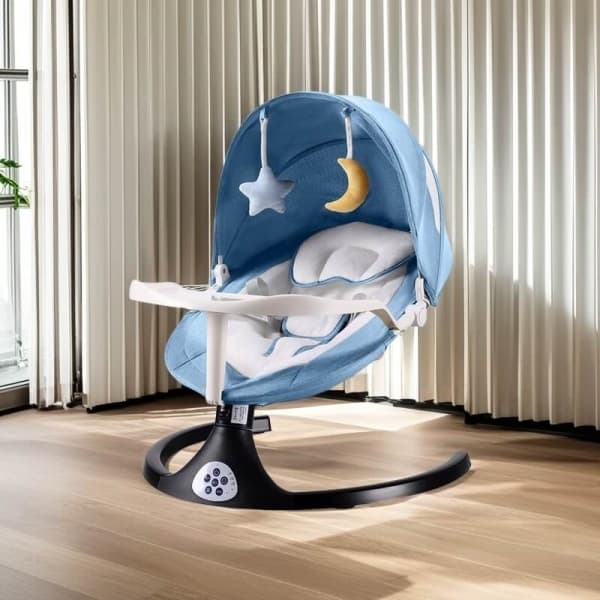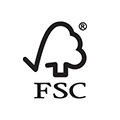Montessori floor beds have simple designs that prioritize child safety and encourage independence. They have thus become quite popular among parents and caregivers in recent years. More so in those fragile years when children need to transition from cribs to toddler beds.
But, when exactly is the right time to transition children to Montessori beds? More importantly, are they safe? What are their benefits?
Read on as we answer these and other key questions on Montessori beds and share tips on how to use them.
The History and Origins of Montessori Floor Beds
Montessori Method and its Principles
The idea of Montessori emerged from the Montessori concept of educating and caring for children. The concept was initiated by Dr.Maria Montessori in the early 1900s.
While teaching children from humble neighborhoods in Rome, Dr.Montessori took a different approach from other schools. She allowed children to explore, encouraged autonomy, and offered guidance where necessary.
Over time, it was evident that children under Dr.Montessori’s care were thriving and more interested in learning. She thus encouraged parents to also practice a Montessori way of parenting. This entails allowing children to be more independent and free to explore things that they are curious about through play and practical activities or simple chores.
Evolution of the Floor Bed Concept
In the mid-90s, Maria Montessori was traveling and researching different child-rearing practices and their benefits.
During this time, she discovered cultures in India and elsewhere where children were put to sleep on simple mats for daytime naps. The children could easily get on and off the mats which made them safe. The mats also supported the Montessori idea of allowing children to be more independent, unlike cribs which are far more restrictive.
Dr. Montessori furthered this concept by writing and teaching about it during talks. She highlighted its benefits and recommended ways to implement it safely while keeping children comfortable.
Floor beds thus emerged in Europe and gradually caught on in other countries. The designs are now more modern but the core concept of a safe unrestrictive sleeping space close to the floor is the same. Manufacturers and consumers refer to this type of bed as Montessori floor beds too because the whole idea is associated with Dr. Maria Montessori’s work.
What is the Point of a Montessori Floor Bed?
A Montessori floor bed should ideally fulfill three key objectives:
Provide a Safe Sleeping Environment
Floor beds are barely elevated from the floor. They are, therefore, safe for children because there is no risk of accidental falls.
Moreover, even in the rare event that a child rolls off a floor bed, the distance between the mattress and the floor is minimal. They are thus unlikely to suffer any injuries.
Such safety is a welcome assurance considering how adventurous toddlers can be. It can, additionally, provide more peace of mind for parents when it is time to transition children to a different bed.
Encourage Autonomy
A floor bed makes it easy for toddlers to get on and off their beds safely without any help. They can thus become more independent and go to the bathroom or use the potty when they need to, for example.
Such autonomy creates a great environment for learning as well as developing mobility and coordination skills. It can equally help children have less separation anxiety; because the lack of unnecessary restrictions on a floor bed leaves them free to move and seek parental attention when they need it.
Encourage Exploration
Toddlers become even more curious once they begin to crawl and walk. Limiting their movements can thus make them frustrated. It also keeps them from learning as much as they can through safe exploration.
Creating safe accessible spaces makes it easier for children to move around and satisfy their curiosity. A Montessori floor bed provides such accessibility without compromising safety.
At What Age Can a Child Use a Montessori Floor Bed?
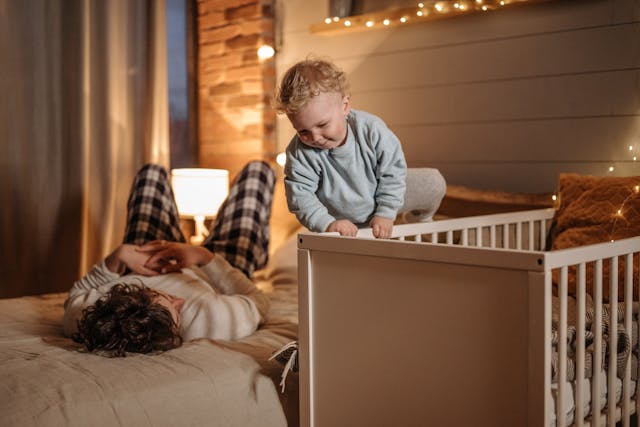
When Should You Transition from a Crib to a Floor Bed?
There is no specific age for when a child should begin using a Montessori floor bed. However, pediatric experts recommend that children should sleep in the same room as their parents for at least the first 6 months of life.
In addition, Parents should ensure that children up to at least 12 months sleep on their backs for safe sleeping and to particularly prevent sudden infant death.
Based on this, it may be ideal to consider transitioning children to Montessori floor beds when they are at least a year old or older. Additionally, this can be a suitable timeline for sleep transitions because children at this age can move around and thus enjoy the benefits of a Montessori floor bed.
Signs Your Child Is Ready
The Montessori method advocates for considering a child’s unique needs when teaching them or raising them. Therefore, one of the best ways to determine when to transition a child to a Montessori floor bed is to observe how they are coping with their current sleeping arrangements. This will enable you to spot signs for when it is time to make a change.
Some of the signs to look out for include:
Outgrowing a Crib: When a child no longer comfortably fits in their crib, a transition is inevitable. The upside, however, is that you can begin pointing out to them how big they have grown and why they now qualify for a bigger bed. This often makes the change easier for them to embrace.
Attempts to Climb Out of Their Cribs: Toddlers often come up with very creative ways to climb out of their cribs. While it may be funny, it is also unsafe and is a sign that they need more freedom. Moving them to a Montessori floor bed will offer exactly that.
Sleeping through the Night: When a toddler can sleep through the night, you do not need to worry too much about them wandering at night or getting scared when they wake up in their own bed. It is thus a prime time to transition them to the freedom of a floor bed.
What Preparation Is Needed to Transition to a Montessori Floor Bed?
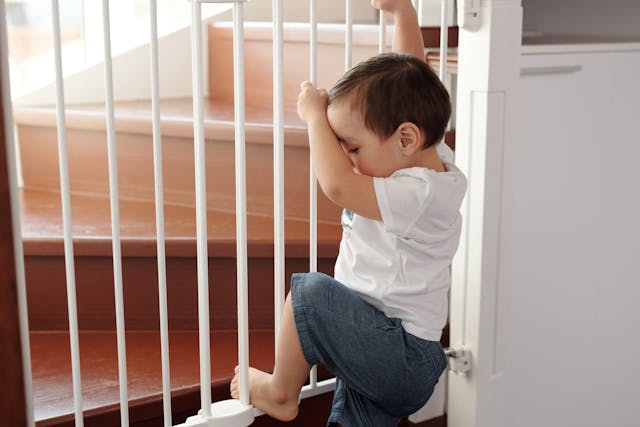
Transitioning a toddler to a Montessori floor bed grants them a lot of freedom to explore. It is consequently vital to create a safe environment for sleep and adventure. Here is how to navigate the preparation process.
Clean the Room
Sleeping so close to the floor is only safe if the floor and the entire space are clean. So, begin by cleaning the room including common dust havens like floor skirting. Ensure the floor is dry as well to prevent mold or mildew from sprouting on the Montessori floor bed.
Mitigate Cold
Some floor types can get quite cold even when a home has proper insulation. If this is the case in your home, consider cold-mitigating solutions like installing a carpet.
Check for gaps under the door too and evaluate whether they bring in a draught. You can resolve this by either sealing the gaps or arranging the room such that the draught does not flow directly to the Montessori floor bed.
Childproof
Childproofing makes the room safe for a toddler to sleep and play in their space even without constant adult supervision. It entails:
- Sealing all power outlets
- Keeping any electrical cords or lighting strips away from reach
- Installing door stoppers and gates
- Removing all sharp objects from the room
- Removing all choking hazards
- Removing unnecessary obstacles
- Keeping essential items like toys, books, and lighting switches at a level that is accessible to a child
Decorate
Take time to make the space beautiful by installing wallpaper or painting it in cheerful colors and adding the kind of toys that your child may enjoy. An appealing sleeping space contributes significantly to a child’s wellness. It is also more likely to entice a child to happily transition to sleeping independently.
Choose a Suitable Montessori Floor Bed
Compare Montessori floor beds and select one that is safe and would appeal to your child. If the bed does not come with a mattress, confirm its measurements and find a suitable mattress for it. Finish up this process by choosing cozy bedding for the Montessori floor bed.
How to Transition to a Montessori Floor Bed: A Step-by-Step Guide
Making any changes to a child’s normal routine is a process. Change is, after all, scary even for adults. So, when you start thinking about transitioning your child to a Montessori floor bed, here is how to do it and what to expect.
1. Set a Timeline
Determine when you would like to initiate the transition so that you can start preparing for it on time. Such planning will allow you to prepare the new sleeping space and start preparing your little one for the change as well.
Aim for a calm time to start the transition. For example, seasons when a child is teething or unwell may not be ideal and they are more likely to resist. In comparison, if they are well and all is fairly normal then they are more likely to handle the change better.
2. Start with Naps
Gradual change is far less intimidating. So, if your little one is not so eager for change, start the transition slowly. You can place them on the floor bed to nap during the day at first then once they get used to the room and the new floor bed, you can transition to them sleeping there overnight too.
3. Walk them Through It
Help your child learn how to properly get on and off the floor bed. It will keep them safe if they can do it right and show them how much independence and freedom the floor bed will offer them.
Additionally, if you are transitioning a toddler to a Montessori floor bed, make an effort to gently explain the change to them. They will likely fare better if they have even a rough idea of what is happening. Reassure them if they have any misgivings and remind them that they can always call out or come to you whenever they need to.
4. Practice Patience
The first few days may be bumpy and children can sometimes regress and want to return to their previous sleeping arrangements. Comfort them if this happens but stay consistent with the new sleeping arrangements.
Montessori Floor Bed Tips
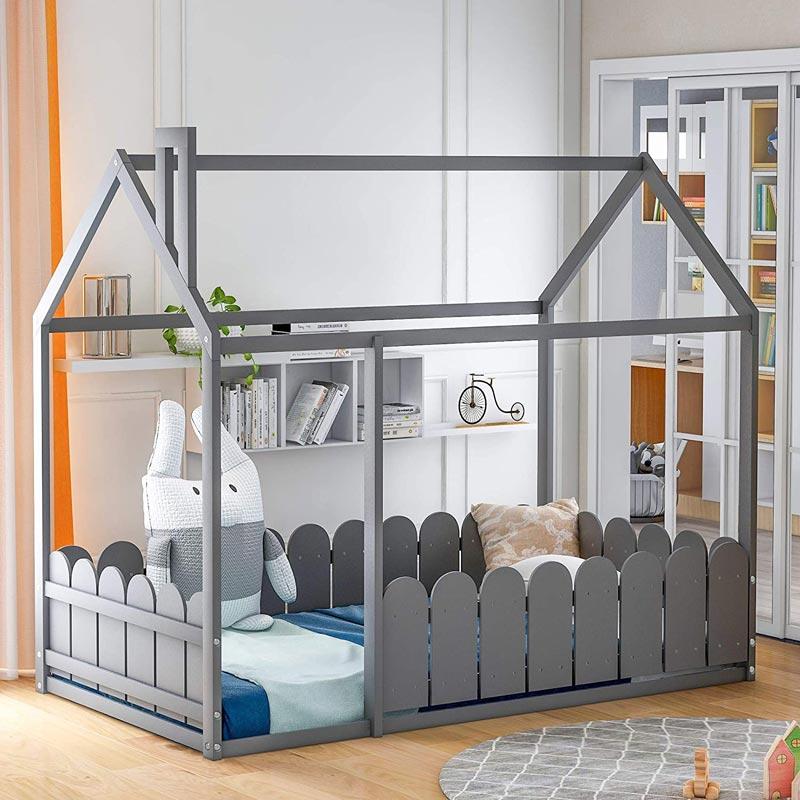
Choosing the right Montessori floor bed is vital for the safety, wellness, and comfort of your baby. Consider:
The Montessori Floor Bed Design Considerations
Choose the Right Bed Frame: Prioritize Montessori floor bed frames that can fit in the space that you have in your home. When it comes to the base, there is no hard and fast rule but an elevated base is often advantageous. It makes cleaning easier and less prone to mold.
Select a Reasonable Layout: Envision the room layouts that you can work with depending on the space and shape of your child’s room.
Select the Right Mattress and Bedding: The ideal mattress should fit the bed properly and Be firm. For children aged 12 months and below, experts recommend only a flat sheet for safe sleep. For children older than a year, a full set of bedding is acceptable. Aim for breathable fabrics for ultimate.
Safety Considerations
When selecting a Montessori floor bed, pay attention to safety concerns such as:
The Quality of Materials: Natural wood is ideal. However, if you choose a design made of engineered wood like MDF, it should be of high quality and have the lowest VOC emissions possible. Check all other inputs such as adhesives, paints, or varnishes too, and confirm that they are non-toxic.
Structural Stability: A proper Montessori floor bed should be stable and able to handle a significant amount of weight. Reconsider any designs that have a low weight limit because they are unlikely to serve you for long. Any squeaks or shakes are cause for alarm too as they may indicate low structural integrity.
Smooth Finishing: Like all children’s products, all parts of a floor bed should have a smooth finish. This prevents accidents like splinters and scratches from rough edges.
Montessori Floor Bed Vs. Traditional Cribs
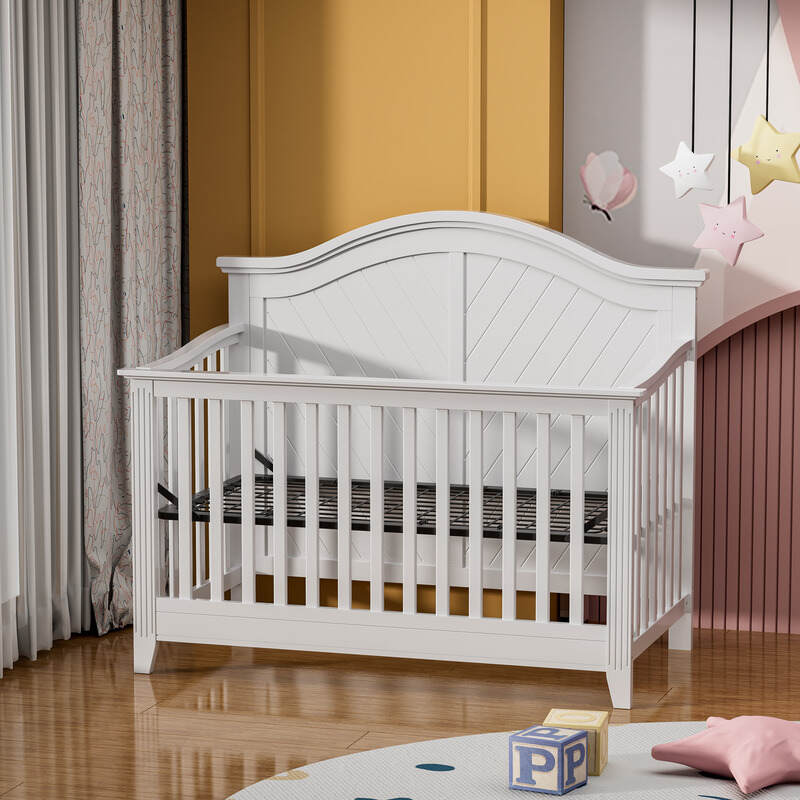
It is not uncommon to feel torn between Montessori floor beds and traditional cribs. Still, there is no right or wrong choice. You only need to weigh both options and determine which of them would work best for your home.
Key Differences
| Floor Bed | Traditional Cribs | |
| Design | Low to the ground, often without sides and rails | Elevated with high sides or rails |
| Recommended Age | Suitable for children aged 6 months to 7 years | Suitable for children from birth to 3 years old |
| Safety Considerations | It provides freedom right from the start as children can get in and off without help | It limits a child’s freedom of movement because they can only get on or off with an adult’s help |
| Sleep Habits | Fosters self-soothing and healthy sleep routines | May create dependency on parents for sleep routines |
| Developmental Support | Encourages movement, exploration, and motor skills | Limits movement; may hinder natural exploration |
| Cost-Effectiveness | A child can use it from the toddler stage until they outgrow it. It is thus also more cost-effective. | It is usually more expensive, and children quickly outgrow their cribs. |
Pros and Cons of a Traditional Crib
Pros
Co-sleeping: Parents can co-sleep safely with infants by using a crib.
Parental supervision: cribs enable parents and caregivers to monitor their children in environments that are not childproofed like hotels during travel.
Cons
Dependency: ribs keep children dependent on their caregivers instead of inspiring them to develop and explore their autonomous abilities.
Limited utility: quality cribs can cost a fair sum but may only serve families for a short time.
Pros and Cons of Montessori Floor Bed
Pros
Freedom and autonomy: a Montessori floor bed and sleeping setup helps young ones discover how much they can do for themselves because they are not forced to be dependent on their caregivers.
A better child development approach: a Montessori sleep setup keeps a child’s essentials like toys, books and their bed accessible. It is healthier for child development as it tailors the room for the child instead of forcing the child to adapt to the room.
Cons
Safety challenges: the freedom that a Montessori bed provides can be detrimental if the environment is not childproofed.
Sleep routine disruptions: children can sometimes roll off their Montessori floor beds and end up sleeping in unusual locations in their rooms. They may also wake at will once they discover their freedom.
Conclusion
Montessori floor beds create a wholesome sleeping environment that promotes healthy child development. Granted, it may be different from the traditional cribs that we encounter in most homes but positive change is always a step in the right direction.
Just be sure to adhere to the recommended safety tips of a Montessori floor bed sleeping space and, of course, make the room as beautiful as your little one deserves.
Why Clafbebe?
At Clafbebe, we design and manufacture baby furniture with families in mind. We spare no effort to ensure the utility, quality, and safety of each Montessori floor bed we make meets the highest standards. It is more than about making a sale for us. We thrive on meeting our customers’ needs to their satisfaction.
Contact us today and we will deliver the Montessori floor beds that you need for your brand or business.
Recommended Related Articles:


